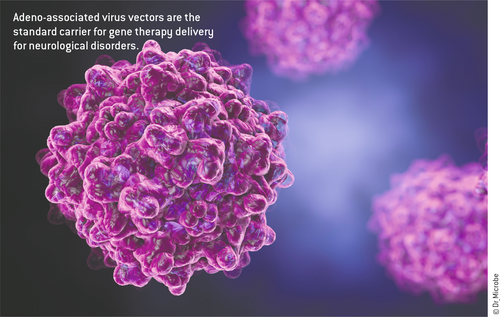Gene Therapy Holds Potential for Dravet Syndrome
AAV-mediated SCN1A gene replacement therapy in mouse models of DS showed promising results
Dravet syndrome (DS) is severe, early onset, developmental, and epileptic encephalopathy that is associated with drug-resistant seizures and multiple comorbidities. A rare disease with an estimated incidence rate of 1:16,000, DS typically manifests in the first year of life, resulting in profound symptoms that require life-long care. Patients with DS may experience intellectual disability, behavioral concerns, sleep disorders, gait problems, cognitive dysfunction, developmental delay, and heightened risk for sudden unexpected death in epilepsy.
Knowledge has increased regarding the pathophysiology of DS, and more than 80% of patients harbor monoallelic loss-of-function mutations in the SCN1A gene. The SCN1A gene encodes the voltage-gated sodium channel 1.1, which is one of four voltage-gated sodium channels expressed in the brain; however, treatment of DS remains elusive. Anti-epileptic drugs typically used as first-line therapy are often ineffective or contraindicated for DS. Several recently approved drugs have successfully ameliorated some DS symptoms, but at the current time, no disease-modifying treatments have received regulatory approval. A treatment for this disorder remains a pressing unmet need.
This proof-of-concept study demonstrated that a therapeutic strategy that specifically targeted GABAergic neurons provided protection against several key symptoms of DS, without any observed toxicity or side effects. The therapy was delivered using adeno-associated virus (AAV) vectors, which are the standard carrier in gene therapy delivery for neurological disorders.
This work is preliminary, but the results support further investigation of gene therapies targeting interneurons as a treatment for DS, explained study co-author Boaz Levi, PhD, of the Allen Institute for Brain Science.
“It is quite promising, and this work supports advancing it to be tested in a clinical setting,” he said. “The target population for this therapy would be all patients suffering from DS.”
Current treatments for DS only address symptoms. “Patients with DS are treated with a number of anti-epileptic therapies,” Dr. Levi said. “These have varying degrees of success, but rarely if ever completely suppress all the seizures, and don’t address the major comorbidities, including sleep disorder, cognitive dysfunction, and motor dysfunction.”
“There are no FDA-approved therapies that get to the underlying cause, which is the loss of SCN1A, but there are some promising drugs in the clinic that aim to increase the expression of SCN1A,” he continued. “Our approach is unique since it is supplementing a good copy of the gene, and only to the inhibitory cells.”
The Study
In this study, Dr. Levi and colleagues sought to restore SCN1A to telencephalic GABA-producing (GABAergic) interneurons using AAV vectors. As there was no interneuron-targeting approach suitable for AAV-based gene replacement therapy in DS, they developed a new targeting technology that utilized specialized enhancers to allow precise activation of the therapeutic SCN1A gene only in inhibitory neurons. As the SCN1A gene size exceeds the cargo capacity of AAV vectors, the researchers generated a split-intein fusion form of SCN1A and then used a dual-vector delivery approach to circumvent size limitations. They also used previously developed technology to produce an interneuron-specific gene replacement therapy for DS called DLX2.0-SCN1A. The dual DLX2.0-SCN1A AAV vectors were administered to wild-type mice, and conferred strong dose-dependent protection against postnatal mortality and seizures in Scn1afl/+;Meox2-Cre and Scn1a+/R613X DS mouse models. Neither single or dual DLX2.0-SCN1A AAV vectors resulted in increased mortality, weight loss, or gliosis.
“Patients with DS are treated with a number of anti-epileptic therapies. These have varying degrees of success, but rarely if ever completely suppress all the seizures.”
— Boaz Levi, PhD
“Our next steps are to further conduct preclinical studies to determine if this strategy is appropriate for use in the treatment of patients with DS,” Dr. Levi said.





